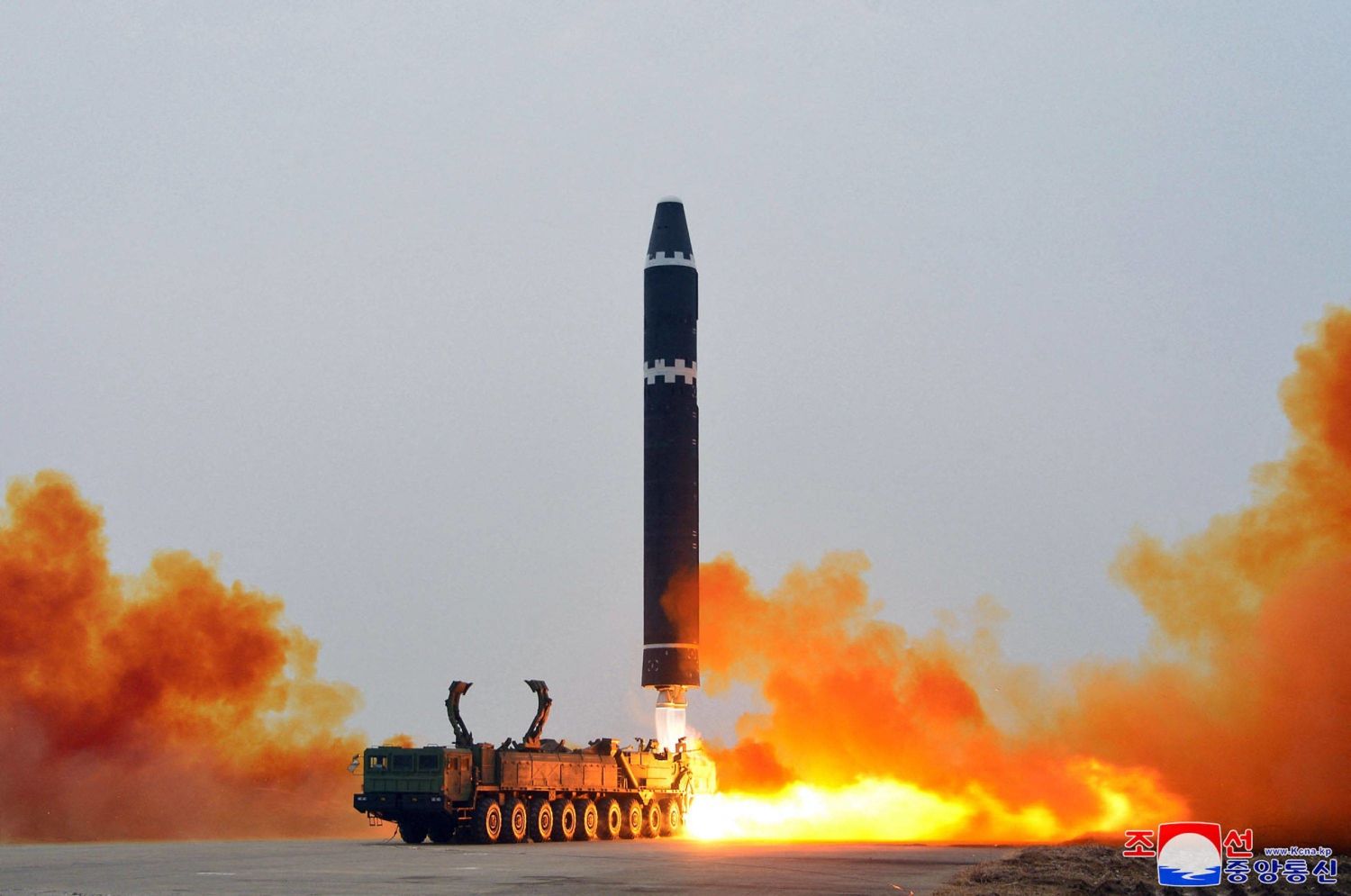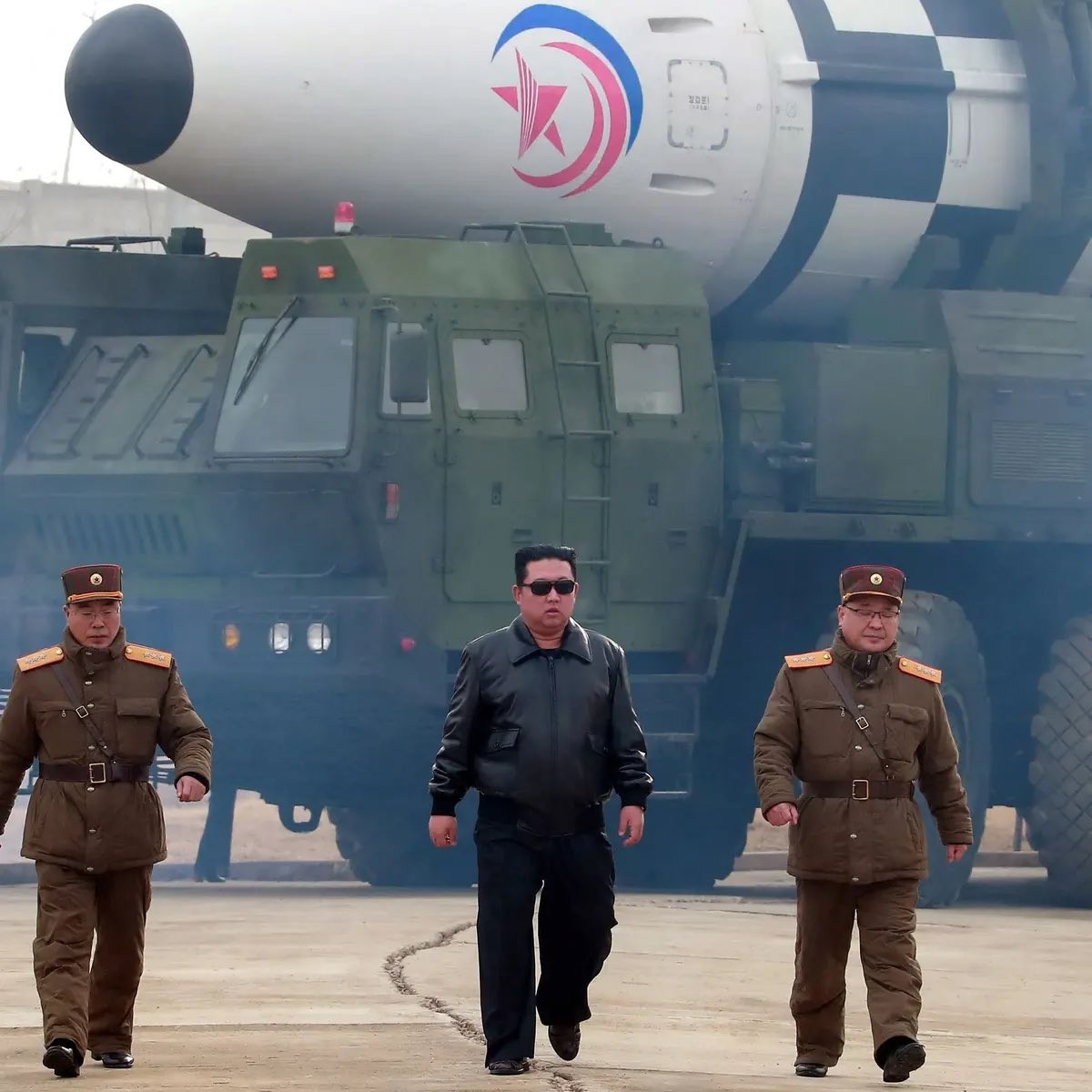In response to mounting concerns about North Korea’s growing nuclear capability and increased frequency of missile launches, a US senator has suggested that Washington redeploy its tactical nuclear weapons in South Korea as an effective means of establishing atomic deterrence.
Highlighting the lack of a fast diplomatic solution to North Korea’s nuclear predicament, a ranking member of the US Senate Armed Services Committee on May 29 made the official suggestion of the US redeploying its tactical nuclear weapons in South Korea in a written report.
Sen. Roger Wicker (R-MS), in a report titled “21st Century Peace Through Strength: A Generational Investment in the US Military,” noted Pyongyang’s continued ability to “outpace expectations” about its missile and nuclear programs. He argued that it had the potential to target the continental United States.
The senator pointed out in his report, “Because there is no immediate diplomatic solution in sight, the United States must ensure that deterrence does not erode on the Korean Peninsula.”
“That means maintaining readiness with regular US-Republic of Korea military exercises, keeping a persistent US military presence on the Korean Peninsula, and exploring new options — such as nuclear-sharing agreements in the Indo-Pacific and redeployment of US tactical nuclear weapons on the Korean Peninsula — to bolster deterrence on the Korean Peninsula,” he added.
Interestingly, soon after the report was tabled, North Korea launched multiple short-range ballistic missiles into the East Sea. As per reports from South Korea, at least ten missiles were launched, which traveled about 350 kilometers, before being dumped into the sea.
Seoul said the launch was a “clear provocation” on the part of Pyongyang and “seriously threatens the peace and stability of the Korean Peninsula.”
US Indo-Pacific Command: Aware of North Korea's missile launch, is consulting closely with South Korea, Japan, allies. US condemns these actions and assesses they do not pose an immediate threat to U.S. personnel, territory, or our allies.
Follow News:https://t.co/RWF9SsL84k pic.twitter.com/SXecyjMZgl
— Donald Standeford (@Don_Standeford) May 30, 2024
Modernizing North Korea’s armed forces has been a priority for its leader, Kim Jong Un, who has made developing more advanced weapons and equipment his top priority. This is believed to comprise the expansion of nuclear capability, including missiles already developed or under development.
In response to the latest launch of missiles, the US Indo-Pacific Command urged North Korea to “refrain from further unlawful and destabilizing acts.” UN sanctions over Pyongyang’s nuclear program prohibit it from conducting ballistic missile tests.
Calls For Redeployment Of US Nukes Are Getting Louder
The senator’s report also coincides with persistent discourse in South Korea that with Pyongyang’s increased emphasis on its nuclear and missile programs, Seoul needs to think about implementing more stringent security measures, such as acquiring atomic weapons or redeploying US tactical nuclear weapons.
This is not the first time that a public figure from Washington has called for the deployment of nukes in South Korea. Last month, former US National Security Adviser John Bolton made a similar pitch, calling on the government to deploy nuclear weapons to Seoul to send a clear message to North Korea. He also said that the move would alleviate calls in South Korea to develop their nukes.
“Redeploying the tactical weapons does not preclude South Korea from getting its capability, but it may give us some time to think about whether we want to do that,” he noted.
In addition, last year, two leading think tanks, the US-based RAND Corporation and South Korea’s Asan Institute for Policy Studies, assessed the possibility of such redeployment and gauged the prevailing mood in Seoul about the idea. However, the US administration has resisted these calls and looked at other alternatives to offset the threat.

Moreover, Bruce W. Bennett, a senior analyst with the Rand Corporation, also suggested that about 100 of the outdated tactical nuclear weapons that the US has designated for disposal could be modernized at South Korea’s expense. He claimed that in the event of an attack by the North, these might be stored in the US and transported to South Korea.
It may be noted that the United States and South Korea have a security alliance. Under this alliance, US troops are present in South Korea. Like Japan, South Korea is under a US “nuclear umbrella”. The country had tactical nukes on the peninsula till 1991. As per some reports, there were at least 951 tactical nuclear warheads stationed in South Korea.
Because North Korea was not a nuclear power at the time and was a signatory to the Treaty on the Non-Proliferation of Nuclear Weapons or NPT, the US decided it would not be appropriate for Washington to station tactical nuclear weapons against a non-nuclear state. So, the guns were withdrawn.
The situation has changed drastically since 1994 following North Korea’s withdrawal from the NPT. The country has gone nuclear, and there is a belief in both the US and South Korea that American tactical nuclear weapons need to be re-transferred. If that does not work out, indigenous atomic capability must be revived.

The intermittent warnings coming from North Korea have not helped the cause. Pyongyang views the growing military cooperation and military drills between the US and South Korea as a threat to its security. In response to this burgeoning threat, it has bolstered its missile program.
During an intercontinental ballistic missile (ICBM) test conducted in December last year, North Korean leader Kim Jong Un said his country had a policy of not hesitating to launch a nuclear strike on its rivals if provoked. Kim has regularly threatened to use nuclear weapons preemptively since he adopted a new and revised atomic doctrine in 2022.
However, the US has been looking at other ways to quell the claims for the development of nuclear weapons in South Korea or the redeployment of US nukes in the peninsula. For instance, the two allies established the Nuclear Consultative Group (NCG) last year to address strategic and nuclear planning matters. Under the NCG framework, the allies have developed planning and operational principles for a common atomic strategy.
The senator called for talks with South Korea, Japan, and Australia to determine their willingness to participate in a “nuclear-burden sharing arrangement” with the US, akin to those with allies in the North Atlantic Treaty Organization (NATO).
He stressed the need for “substantive” adjustments to the US force’s posture and structure in response to what he termed the “nuclear expansion” by China and Russia. Further, he also proposed discussing a framework for working with US allies to counter nuclear threats in the region.
However, with calls for the deployment of tactical nukes back to South Korea, analysts have warned that it would be vehemently opposed by China and lead to yet another standoff between the two countries.
- Contact the author at sakshi.tiwari9555 (at) gmail.com
- Follow EurAsian Times on Google News




